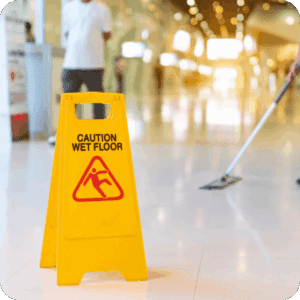 Looking for more transient business for your hotel?
Looking for more transient business for your hotel?
Well, I might just have the answer for you.
It comes in the from of aÊ10 minute time investmentÊin AdWords. …Seems simple enough.
Most people these days (yourself probably included) are constantly using their phones. Walk outside during lunch time and you will be hard pressed to find someone who isn’t staring into their mobile devices. This isn’t limited to kids or millennials and this isn’t just limited to lunch time. Anytime you go outside, you can see that people are immersed in their phones.
This is why you need to make sure that your hotel is showing up in searches during these critical moments. When your customers are looking for a place like yours, you need to make sure that you are there.
This is where geo targeting (more specifically radius targeting) in AdWords comes into play.
If you are looking for a clear and actionable plan of action that you can implement for your hotel, then you are in the right place. I’ve even included a bunch of photos to follow along.
Read on to see how you can implement this for your hotel.
Why geo-targetingÊ is important now
Take this recent research by Think With Google, an initiative by Google to share everything from high-level insights to deck-ready stats to useful tools:

If you are interested, you can find more statsÊhere.
The point of this graphic is clear. People are using their phones more intimately than before. This means that they are searching for things that contain the words,Ênear me, for me, and by my.
Now let’s look at ways you can use Google AdWords to take advantage of this new trend.
Typically when people talk about local marketing, local SEO comes to mind, but it is not the same thing.
How your hotel can use location targeting
This is the definition that Google offers for location targeting:
AdWords location targeting allows your ads to appear in the geographic locations that you choose: countries, areas within a country, a radius around a location, or location groups, which can include places of interest, your business locations, or tiered demographics.
There are use cases for each one of the many ways that you can target people, but for the purposes of this article, I am only going to talk about radius targeting.
Let’s see how this could work.
When you use proximity targeting (just another name for radius targeting) you shrink the pool of people that can see your ad, substantially. Since the people that can trigger your ad is much smaller, you can target more generic terms. You can target the term Òhotels near meÓ and rest assured that you won’t rack up huge costs overnight.
Do you have an enticing offer for guests who check in last minute? You can layer this offer to the people that are within your radius to maximize its effect, and help fill your hotel for the night. Target people who are performing this search on their phones, and you have a potential match made in heaven. Think about it. I’m on MY PHONE, looking for A HOTEL, and I am within 25 MILES of your hotel. If you have a good product, why wouldn’t I book with you?
You should also keep in mind that there is an added bonus to doing this if your hotel has a restaurant! You have a local offering for the community, why not use it!
Setting up location targeting for your hotel
The great thing about location targeting is that you can get started quickly. In roughly 10 minutes you should be ready to roll. It shouldn’t take you that long to get things going. There are just a few steps that you need to follow:
- Once you are in the AdWords interface, you will want to click the Campaigns tab.

- I prefer to create a new campaign, that has a primary focus for location targeting, but you can also edit an existing campaign to add this radius targeting to it.
- Once you are in the campaign you wish to add targeting to, you can click on the Settings tab. This will be located in the same column as where you clicked on the Campaigns tab.
- Once in Settings, you can click on “Locations” > ÒEnter Another LocationÓ and click Advanced search.

- Click Radius targeting. You can either enter your physical address or use your Google My Business Location information if you have connected the two Google products. (You should definitely connect them to take advantage of location extensions in AdWords). You can set any mileage around your business that you think is appropriate, but just remember, the further that you go out, the less relevant it could potentially be to most users. I usually try to stick in the 20-30 mile range, and sometimes even that can be too much. A lot of it depends on competition.
- Make sure to hit Save
There you have it! This simple addition to your AdWords account, could be just what you need to get those last minute bookings. It could also help you slowly tick up your occupancy. For something that only takes about 10 minutes to set up, its worth a shot, right?
There are some things that should be noted though. As I said earlier, the further out that you go in mileage when using AdWords Location Targeting, the less ÒrelevantÓ your ad will be. If you go out too far, then you might as well not have the radius targeting as it will lose its desired effect. The other side of this should also be noted. If you target a radius that is too small, then your ads will only show on rare occasions, when all of your prerequisites have been met. Finding that balance for your hotel is where the success if going to lie for your hotel.
About the author
 Alex Corral is the Marketing Communication Manager at E-Marketing Associates.ÊE-Marketing AssociatesÊworks exclusively with independent hotels and builds innovative online marketing products that increase direct bookings and drive top-line revenue.
Alex Corral is the Marketing Communication Manager at E-Marketing Associates.ÊE-Marketing AssociatesÊworks exclusively with independent hotels and builds innovative online marketing products that increase direct bookings and drive top-line revenue.















